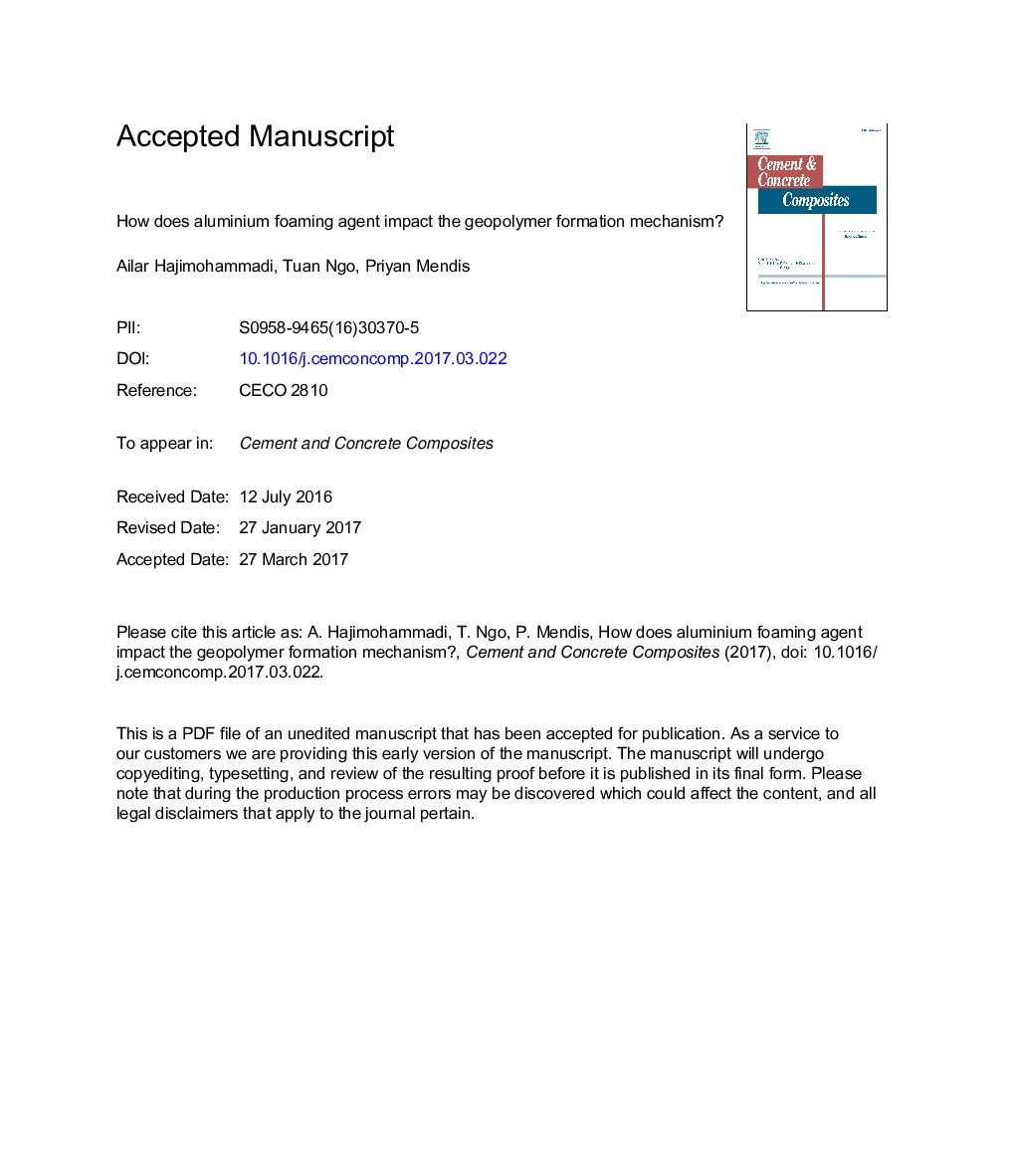| Article ID | Journal | Published Year | Pages | File Type |
|---|---|---|---|---|
| 5436877 | Cement and Concrete Composites | 2017 | 29 Pages |
Abstract
Aluminium is widely used as a foaming agent in lightweight geopolymer concretes. The impact of aluminium reaction on the phase evolution of fly-ash based geopolymers is investigated. In-situ Fourier transform infrared spectroscopy (FTIR) is used to track the changes in the nanostructure of geopolymers. By combining the FTIR functional group analysis with Atomic-force microscopy (AFM) results, it is possible to evaluate the phase development during the early hours of reaction. At the initial stages of geopolymerization, aluminium reaction induces the formation of aluminium hydroxide gel which precipitates on fly ash and conceals the reactive surface of ash particles. Therefore, the dissolution rate of fly ash declines and the strength development is delayed. The high release rate of alumina into the solution, as a result of the aluminium metal reaction, leads to a better connectivity of unreacted particles and better microstructural development as shown in SEM images. Also, by consuming part of the sodium hydroxide catalyst at the beginning of the reaction, aluminium powder protects some of the alkali content of geopolymer matrix from carbonation.
Related Topics
Physical Sciences and Engineering
Engineering
Industrial and Manufacturing Engineering
Authors
Ailar Hajimohammadi, Tuan Ngo, Priyan Mendis,
